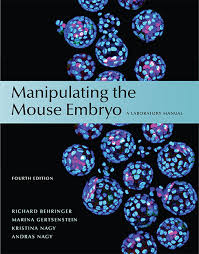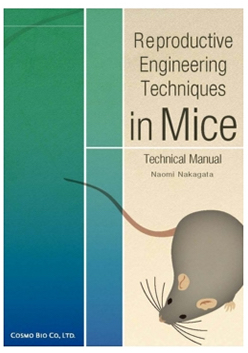ANAT2341 Lab 2: Difference between revisions
No edit summary |
No edit summary |
||
| Line 1: | Line 1: | ||
{{ | {{ANAT2341Lab4}} | ||
| Line 7: | Line 5: | ||
==2. Guest | == 2. Guest Lecture Dr Fabien DeleRue (Transgenic Animal Unit (TAU)) - Transgenic mouse models of human conditions == | ||
[[File:Fabien deleRue profile photo.jpg]] | |||
Dr Delerue’s career spans over twenty years practice in animal handling, surgery, and generation of animal models of diseases. His research focuses on the production and characterization of new transgenic mouse models of human genetic disorders, using cutting-edge genome engineering techniques such as CRISPR/Cas9. | |||
UNSW Research Gateway: [https://research.unsw.edu.au/people/dr-fabien-delerue] | |||
'''Recent articles''' | |||
= | Delerue F & Ittner LM. Genome Editing in Mice Using CRISPR/Cas9: Achievements and Prospects | ||
Cloning and Transgenesis 2015, 4:135 doi:10.4172/2168-9849.1000135 [http://www.omicsgroup.org/journals/genome-editing-in-mice-using-crisprcas9-achievements-and-prospects-2168-9849-1000135.php?aid=50992] | |||
Animal models are a powerful tool to understand the mechanisms underlying physiological and pathological processes in vivo. To date, mice remain the species most commonly used for genetic manipulation. The recent development of engineered endonucleases such as Zinc Finger Nucleases (ZFN), Transcription activator-like effector nucleases (TALEN), and the Clustered Regularly Interspaced Short Palindromic Repeats (CRISPR/Cas9) offered easy, flexible, and fast alternative to ES-Cell based gene targeting. Thanks to multiple advantages, the CRISPR system superseded its predecessors and became a popular method for genome editing. Here, we review the latest techniques to apply CRISPR editing to the mouse genome, and emphasize on the current methods used in transgenic laboratories and subsequent achievements in mice. | |||
Ke YD, van Hummel A, Stevens CH, Gladbach A, Ippati S, Bi M, Lee WS, Krüger S, van der Hoven J, Volkerling A, Bongers A, Halliday G, Haass NK, Kiernan M, Delerue F, Ittner LM.
Short-term suppression of A315T mutant human TDP-43 expression improves functional deficits in a novel inducible transgenic mouse model of FTLD-TDP and ALS. Acta Neuropathologica 2015 Nov;130(5):661-78 PubMed 26437864 [https://dx.doi.org/10.1007/s00401-015-1486-0] | |||
Ittner A, Chua SW, Bertz J, Volkerling A, van der Hoven J, Gladbach A, Przybyla M, Bi M, van Hummel A, Stevens CH, Ippati S, Suh LS, Macmillan A, Sutherland G, Kril JJ, Silva APG, Mackay J, Poljak A, Delerue F, Ke YD, Ittner LM. Site-specific phosphorylation of tau inhibits amyloid-β toxicity in Alzheimer’s mice | |||
Science 2016 Nov;354 (6314):904-908 doi: 10.1126/science.aah6205 [http://science.sciencemag.org/content/354/6314/904.full] | |||
'''Recommended literature''' | |||
[[File:Manipulating_the_Mouse_Embryo.jpg]] | |||
Manipulating the Mouse Embryo: A Laboratory Manual (Fourth Edition) [http://cshlpress.com/default.tpl?cart=147944968860031853&action=full&--eqskudatarq=982] | |||
By Richard Behringer, Marina Gertsenstein, Kristina Vintersten Nagy, & Andras Nagy. | |||
[[File:Reproductive Engineering Techniques.jpg]] | |||
Reproductive Engineering techniques in mice: Technical manual [http://card.medic.kumamoto-u.ac.jp/card/english/sigen/manual/onlinemanual.html] | |||
{{2016ANAT2341}} | Prof Naomi Nakagata, Center for Animal Resources and Development, Kumamoto University, Japan | ||
{{2016ANAT2341 footer}} | |||
Revision as of 09:18, 31 May 2017
| ANAT2341 Lab 4: Introduction | Implantation and Villi | Decidua and Cord | Abnormal Placenta | Cardiovascular | Online Assessment | Group Project |
1. QUIZ
2. Guest Lecture Dr Fabien DeleRue (Transgenic Animal Unit (TAU)) - Transgenic mouse models of human conditions
Dr Delerue’s career spans over twenty years practice in animal handling, surgery, and generation of animal models of diseases. His research focuses on the production and characterization of new transgenic mouse models of human genetic disorders, using cutting-edge genome engineering techniques such as CRISPR/Cas9. UNSW Research Gateway: [1]
Recent articles
Delerue F & Ittner LM. Genome Editing in Mice Using CRISPR/Cas9: Achievements and Prospects Cloning and Transgenesis 2015, 4:135 doi:10.4172/2168-9849.1000135 [2]
Animal models are a powerful tool to understand the mechanisms underlying physiological and pathological processes in vivo. To date, mice remain the species most commonly used for genetic manipulation. The recent development of engineered endonucleases such as Zinc Finger Nucleases (ZFN), Transcription activator-like effector nucleases (TALEN), and the Clustered Regularly Interspaced Short Palindromic Repeats (CRISPR/Cas9) offered easy, flexible, and fast alternative to ES-Cell based gene targeting. Thanks to multiple advantages, the CRISPR system superseded its predecessors and became a popular method for genome editing. Here, we review the latest techniques to apply CRISPR editing to the mouse genome, and emphasize on the current methods used in transgenic laboratories and subsequent achievements in mice.
Ke YD, van Hummel A, Stevens CH, Gladbach A, Ippati S, Bi M, Lee WS, Krüger S, van der Hoven J, Volkerling A, Bongers A, Halliday G, Haass NK, Kiernan M, Delerue F, Ittner LM. Short-term suppression of A315T mutant human TDP-43 expression improves functional deficits in a novel inducible transgenic mouse model of FTLD-TDP and ALS. Acta Neuropathologica 2015 Nov;130(5):661-78 PubMed 26437864 [3]
Ittner A, Chua SW, Bertz J, Volkerling A, van der Hoven J, Gladbach A, Przybyla M, Bi M, van Hummel A, Stevens CH, Ippati S, Suh LS, Macmillan A, Sutherland G, Kril JJ, Silva APG, Mackay J, Poljak A, Delerue F, Ke YD, Ittner LM. Site-specific phosphorylation of tau inhibits amyloid-β toxicity in Alzheimer’s mice Science 2016 Nov;354 (6314):904-908 doi: 10.1126/science.aah6205 [4]
Recommended literature
Manipulating the Mouse Embryo: A Laboratory Manual (Fourth Edition) [5] By Richard Behringer, Marina Gertsenstein, Kristina Vintersten Nagy, & Andras Nagy.
Reproductive Engineering techniques in mice: Technical manual [6] Prof Naomi Nakagata, Center for Animal Resources and Development, Kumamoto University, Japan
Glossary Links
- Glossary: A | B | C | D | E | F | G | H | I | J | K | L | M | N | O | P | Q | R | S | T | U | V | W | X | Y | Z | Numbers | Symbols | Term Link
Cite this page: Hill, M.A. (2024, April 20) Embryology ANAT2341 Lab 2. Retrieved from https://embryology.med.unsw.edu.au/embryology/index.php/ANAT2341_Lab_2
- © Dr Mark Hill 2024, UNSW Embryology ISBN: 978 0 7334 2609 4 - UNSW CRICOS Provider Code No. 00098G


